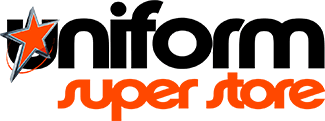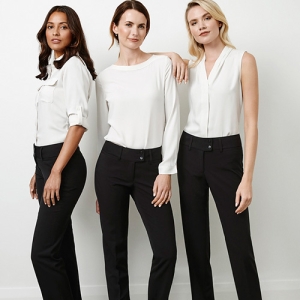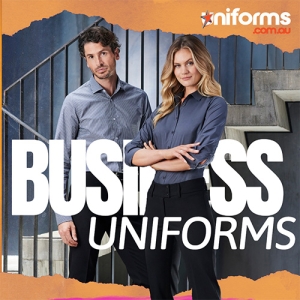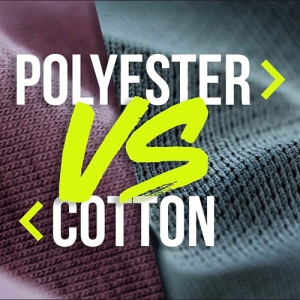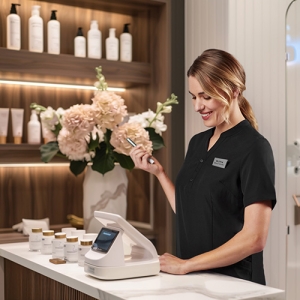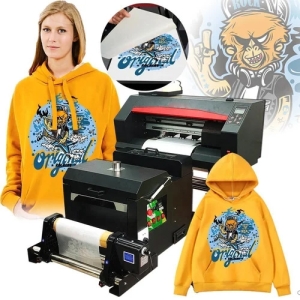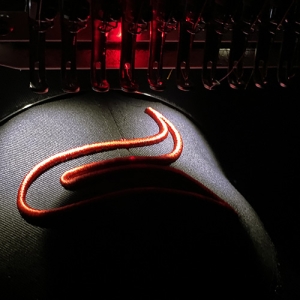September 2024
Surprising Reasons Why Staff Uniforms Can Skyrocket Your Business Success!
Monday, 23 September 2024 19:36The Importance and Benefits of Staff Uniforms for Your Business
Uniforms are more than just clothing—they're a reflection of your brand, culture, and professionalism. Whether you run a small business or a large organization, implementing staff uniforms can have a significant impact on your company's image, customer experience, and even employee satisfaction.
Let’s dive into why uniforms are essential and explore the various benefits they bring to your business.
1. Creating a Strong Brand Identity
A uniform is a powerful branding tool. It instantly conveys your company’s identity, values, and professionalism. When your employees wear branded uniforms, they become walking advertisements for your business, both inside and outside the workplace.
Uniforms that are well-designed and aligned with your brand colors and logos help to create a cohesive and recognizable image. Whether it's in retail, hospitality, or corporate settings, uniforms reinforce brand consistency, making your business more memorable to customers.
2. Fostering a Sense of Team Spirit
Wearing a uniform can help create a sense of unity and belonging among staff. When employees dress alike, they feel part of a collective team, which fosters camaraderie and collaboration. Uniforms help break down barriers, reduce social comparisons based on attire, and emphasize a sense of shared purpose.
This unity can lead to higher morale, increased employee satisfaction, and a stronger workplace culture. In turn, this can improve overall productivity, as team members feel more connected to one another and the company.
3. Enhancing Professionalism and Customer Trust
First impressions matter. A well-dressed team in uniforms conveys professionalism and reliability. Customers are more likely to trust employees who appear polished and professional, which can positively influence their perception of your business.
Uniforms make it easy for customers to identify staff members, especially in service industries like retail or hospitality. This accessibility creates a better customer experience, as customers can quickly find assistance when needed. A professional-looking uniform not only makes your employees look competent but also sets a standard for behavior and service quality.
4. Improving Workplace Safety
In some industries, uniforms aren’t just about appearance—they’re about safety. In environments like construction, manufacturing, healthcare, or food services, uniforms can be designed to meet specific safety standards, protecting employees from potential hazards.
For example, high-visibility clothing, flame-resistant fabrics, or uniforms with specific protective features can prevent accidents and injuries. Safety uniforms also ensure compliance with industry regulations, which is crucial for avoiding legal issues and ensuring a safe workplace.
5. Cost and Convenience for Employees
For employees, uniforms eliminate the need to plan daily work outfits, saving time and money. There’s no pressure to keep up with fashion trends or purchase expensive work attire. Employees can focus on their work rather than their appearance, knowing that their uniforms meet the company’s standards.
Uniforms also ensure equality in the workplace. Everyone is dressed uniformly, which can reduce any subconscious judgments or biases based on clothing choices, creating a more inclusive and fair working environment.
6. Building Brand Loyalty Among Staff
Employees who wear a company uniform often feel a stronger connection to the business. A sense of pride and loyalty can emerge when staff are associated with a brand through their clothing. This connection can lead to better performance, a greater sense of responsibility, and even lower turnover rates as employees feel more integrated into the company.
When employees feel that they are representing the business, they are more likely to uphold the values and standards set by the organization, ultimately leading to higher customer satisfaction.
7. A Competitive Edge in Marketing
Having a team in branded uniforms can also give your business a marketing edge. Employees who wear your logo and colors become ambassadors of your brand, whether they’re on the clock or simply commuting to and from work. This creates free brand exposure in public places, increasing the visibility of your company without additional advertising costs.
In events, exhibitions, or conferences, a uniformed team stands out and looks organized, making it easier for potential clients to recognize your brand and approach your staff.
Conclusion: Uniforms Are an Investment in Your Business
Introducing staff uniforms is more than just a dress code decision—it's an investment in your brand, your employees, and your customer experience. Uniforms promote a professional image, foster team spirit, and even enhance workplace safety. They are also cost-effective and create a sense of equality and pride among employees.
By implementing uniforms, your business can stand out from the competition, build a stronger connection with customers, and create a cohesive and productive work environment. Whether you’re a growing company or an established brand, the benefits of uniforms are clear—they contribute to a professional, unified, and trusted organization.
Understanding the Difference. Raster VS Vector Images
Monday, 23 September 2024 17:17Vector and Raster Images (JPEG) are two different types of image formats, each with its own characteristics and applications.
Vector Graphics
- Vector graphics are created using mathematical equations to define shapes and lines.
- They are resolution-independent, meaning they can be scaled to any size without losing quality.
- Common vector formats include SVG (Scalable Vector Graphics), AI (Adobe Illustrator), EPS (Encapsulated PostScript), and PDF (Portable Document Format).
- Vector graphics are best suited for logos, icons, illustrations, and other graphics that require scalability and crisp edges.
- They are not suitable for representing complex images with gradients or photographs.
JPEG (Joint Photographic Experts Group)
- JPEG is a raster image format commonly used for photographs and complex images.
- It uses lossy compression, which means that some image detail is sacrificed to reduce file size. This compression can lead to a loss of image quality, especially with high levels of compression.
- JPEG images are resolution-dependent, meaning they have a fixed number of pixels and can lose quality when scaled up.
- They are widely supported and can be viewed on almost any device or software.
- JPEG is suitable for photographs, web images, and any images where detail is more important than scalability.
In summary, the main differences between vector and JPEG images lie in their scalability, compression methods, and suitability for different types of images. Vector graphics are resolution-independent and best for simple graphics that need to be scaled, while JPEG images are resolution-dependent and best for complex images like photographs.
Raster vs Vector.
When working with digital photos, graphic design, logos, and other digital images, raster and vector are the two most common file types you’ll encounter. Learn about the key features, similarities, and differences between the two to decide when and where to use each.
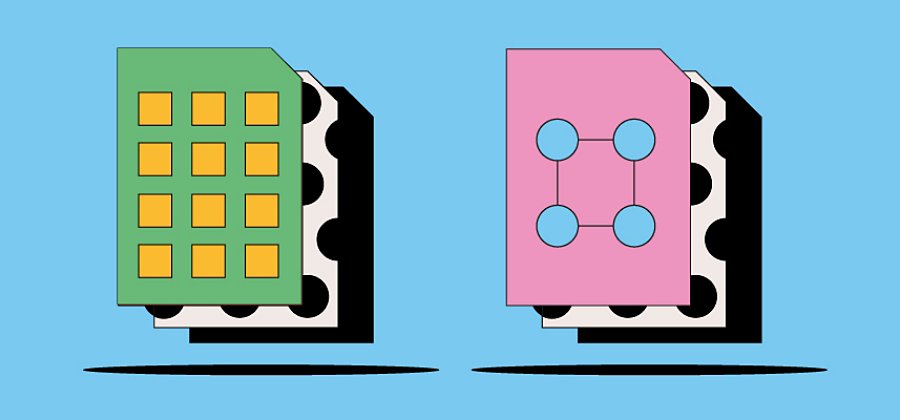
What you’ll learn.
- What is a raster file?
- What is a vector file?
- What is the difference between raster and vector files?
- Raster vs. vector files: frequently asked questions.
What is a raster file?
Raster files are images built from pixels — tiny colour squares that, in great quantity, can form highly detailed images such as photographs. The more pixels an image has, the higher quality it will be, and vice versa. The number of pixels in an image depends on the file type (for example, JPEG, GIF, or PNG).
Learn more about raster file types
What is a vector file?
Vector files use mathematical equations, lines and curves with fixed points on a grid to produce an image. There are no pixels in a vector file. A vector file’s mathematical formulas capture shape, border, and fill colour to build an image. Because the mathematical formula recalibrates to any size, you can scale a vector image up or down without affecting its quality.
Learn more about vector file types
What is the difference between raster and vector files?
Raster and vector files are the two most popular formats used for visual content. They represent images in very different ways, so there’s a lot to consider when deciding which one to use. Some of the main differences between raster and vector include:
Resolution.
One of the main differences between raster and vector files is their resolution. The resolution of a raster file is referred to in DPI (dots per inch) or PPI (pixels per inch). If you zoom in or expand the size of a raster image, you start to see the individual pixels.
Raster files display a wider array of colours, permit greater colour editing, and show finer light and shading than vectors — but they lose image quality when resized. An easy way to tell if an image is raster or vector is to increase its size. If the image becomes blurred or pixelated, it’s most likely a raster file.
With vector image files, resolution is not an issue. You can resize, rescale, and reshape vectors infinitely without losing any image quality. Vector files are popular for images that need to appear in a wide variety of sizes, like a logo that needs to fit on both a business card and a billboard.
Uses.
Digital photographs are usually raster files. Many digital cameras automatically shoot and save photos as raster files — and the images you see online are often rasters, too. Raster files are also commonly used for editing images, photos, and graphics.
Vector files work better for digital illustrations, complex graphics, and logos. That’s because the resolution of vectors remains the same when resized, making them suitable for a wide variety of printed formats.
Some projects combine both raster and vector images. For example, a brochure may use vector graphics for the company logo but raster files for photography.
File sizes.
Raster files are generally larger than vector files. They can contain millions of pixels and incredibly high levels of detail. Their large size can impact device storage space and slow down page loading speeds on the web. However, you can compress raster files for storage and web optimisation to make sharing faster and easier.
Vector files are much more lightweight than raster files, containing only the mathematical formulas that determine the design.
Compatibility and conversion.
You can open raster files in many different apps and web browsers, making them easy to view, edit and share. Vector files aren’t as accessible — many vector file types require specialised software to open and edit the files. Though it can present some challenges, it’s possible to convert vector files to raster or raster files to vector when needed.
File and extension types.
Your software will usually determine your file type, whether it’s raster or vector. There are multiple types and extensions of both raster and vector files, each with its own features. Learn more about some of the common ones:
Raster file types.
Extension
.jpg
.png
.gif
.bmp
.tiff
.psd
Extension
.svg
.eps
.ai
.dae
.ps
.emf
You can open and edit vector files in Adobe Illustrator.
Raster vs. vector files: frequently asked questions.
How do you know if an image is a vector?
You can see if an image is a vector by checking for a vector file extension like those listed above. Another method is to resize the image. If it maintains the same resolution when you increase its size, it’s most likely a vector file. If the image gets pixelated, it’s most likely a raster file.
Is a PDF a raster or vector?
Most PDFs are vector files. However, it depends on the programme used to create the document because PDFs can also be saved as raster files. For example, any PDF created using Adobe Photoshop will be saved as a raster file.
Can you turn a JPEG into a vector file?
You can use Adobe Illustrator to convert a JPEG into a vector:
- Open your JPEG image in Adobe Illustrator.
- Select the JPEG and in the top bar, click Image Trace.
- Then select Expand to convert into a vector image.
- You can right-click and choose Ungroup to separate the new vector image from its background if desired.
- Edit the image, save and export it as a vector file.
Uniforms: The Essential Element for a Professional Workplace
Monday, 23 September 2024 17:17Uniforms: The Essential Element for a Professional Workplace
Uniforms are more than just clothing; they are an essential element that shapes the identity and professionalism of any business. Whether you're in hospitality, healthcare, corporate environments, or any other industry, the right uniforms make a lasting impression on clients and customers. A well-designed uniform not only promotes a cohesive brand image but also fosters team spirit, improves safety standards, and boosts employee confidence. From sustainable uniforms to workwear that meets the highest industry standards, the benefits of uniforms in the workplace are undeniable.
Uniforms provide a sense of unity among employees, enhancing teamwork and making staff easily identifiable to customers. They contribute significantly to brand recognition, as a consistent, polished appearance across all staff members speaks volumes about a company's commitment to quality and service. Moreover, uniforms are designed with specific job functions in mind, offering practical benefits such as enhanced safety, comfort, and durability. For example, DNC workwear in Melbourne is specifically designed to endure tough working conditions, while our range of healthcare and hospitality uniforms ensures that staff look professional and feel comfortable during long shifts.
The Uniform Super Store: Your One-Stop Shop for All Industries
The Uniform Super Store is your one-stop shop for all uniform needs across various industries. Since 1999, we've been a trusted supplier of high-quality, customizable uniforms that cater to businesses of all sizes. Our extensive range includes corporate wear uniforms, hospitality uniforms online, work uniforms in Adelaide, and PPE clothing near you. With offshore manufacturing capabilities and a dedicated Australian-based embroidery and print factory, we ensure that every uniform reflects your brand’s unique identity. Whether you're looking for wholesale dresses in Australia or corporate uniforms in Perth, we offer a seamless experience from design to delivery.
Our services go beyond just providing uniforms; we offer tailored solutions that align with your specific needs. As a leading uniform wholesaler, we understand the complexities of the uniforms workwear market and offer a wide selection, including school uniforms in bulk, jerseys, and custom-made sports uniforms. Our expertise in uniform printing in Australia allows businesses to personalize their attire with logos and branding, enhancing their professional appearance. For those looking to make a statement with their team’s apparel, our custom uniform programs provide endless possibilities for creating a look that stands out.
Comprehensive Solutions for Every Industry
At The Uniform Super Store, we cater to a diverse range of industries, offering everything from scrubs for healthcare professionals in Australia to high-visibility workwear for construction sites. Our catalog includes everything from uniforms for corporate teams, hospitality aprons in Sydney, and healthcare uniforms in Melbourne to school uniforms for educational institutions. We also offer modern spa uniforms in Australia, office uniforms in Brisbane, and kitchen uniform suppliers for the culinary industry. Our products are designed to withstand the rigors of daily wear while maintaining a fresh, professional look.
We pride ourselves on being more than just a uniform supplier—we are your partner in creating a professional and cohesive brand image. With options like uniform customization, embroidery, and printing, we help businesses achieve a look that reflects their values and enhances their brand presence. Our commitment to quality and customer satisfaction has made us one of the top 10 uniform companies in Australia. From managed uniform apparel programs to supplying uniforms workwear solutions, we cover all aspects of uniform needs with unmatched expertise and dedication.
Why Choose The Uniform Super Store?
Choosing The Uniform Super Store means investing in quality, reliability, and a tailored approach to your uniform needs. We offer a wide selection of apparel, including women's fashion wholesale suppliers in Australia, men's uniforms, and uniforms for children, ensuring that every member of your team is dressed to impress. Our extensive experience and industry knowledge allow us to provide uniforms that not only meet but exceed expectations in terms of design, comfort, and functionality. With options to buy corporate uniforms online, order scrubs in bulk, and shop for wholesale workwear clothing, we make it easy to find the perfect fit for your business.
Our goal is to simplify the uniform buying process, offering comprehensive solutions from initial design to final delivery. Whether you need a corporate uniform supplier in Perth, custom uniforms in Melbourne, or wholesale medical PPE in Perth, The Uniform Super Store has you covered. We take pride in our ability to provide high-quality uniforms that enhance brand image while meeting the specific needs of your industry. Explore our extensive range today and discover why businesses across Australia trust us as their go-to uniform supplier. From the boardroom to the kitchen, The Uniform Super Store is here to ensure your team looks and feels their best every day.
Cotton vs Polyester: Understanding the Differences and Benefits in Clothing
Monday, 23 September 2024 17:17Cotton vs Polyester: Understanding the Differences and Benefits in Clothing.
Automated & Streamlined Franchise Uniform Ordering System
Monday, 23 September 2024 05:31Automated & Streamlined Franchise Uniform Ordering System.
In today's fast-paced business world, staying ahead of the competition means embracing innovative solutions that streamline operations and boost efficiency.
Understanding DTF Printing: A Game-Changer for the Garment Industry.
Monday, 23 September 2024 04:22Understanding DTF Printing: A Game-Changer for the Garment Industry.
Direct to Film (DTF) printing is rapidly becoming one of the most popular printing techniques for apparel and textiles. This cutting-edge method provides a flexible and cost-effective alternative to traditional techniques like screen printing, making it a perfect choice for modern garment customization.
But what exactly is DTF printing, and why is it gaining so much attention?
What is DTF Printing?
DTF printing involves creating designs on a specialized clear film, which is then transferred to fabric. The process is simple yet highly effective, allowing for vivid, high-quality prints on a variety of fabrics, no matter their color or composition. Whether you're working with cotton, polyester, silk, or even leather, DTF printing delivers.
Let’s take a closer look at how DTF works and why it’s becoming a go-to solution for businesses and hobbyists alike.
DTF Printing: A Step-by-Step Breakdown
DTF printing starts by printing a design directly onto a clear film using a DTF printer, which is loaded with special inks designed for the process. Once the design is printed, a powdered adhesive is applied to the still-wet ink. The film then moves through a shaker that removes any excess adhesive. Afterward, the design is cured and dried, making it ready for transfer.
The final step is to use a heat press to apply the design from the film to the fabric. This step combines heat, pressure, and precise timing to ensure a durable and flexible print that can withstand regular wear and washing.
Why Choose DTF Printing?
1. Unmatched Versatility
One of the standout features of DTF printing is its ability to adhere to almost any fabric type. From everyday cotton and polyester to more delicate materials like silk or robust fabrics like leather, DTF opens up endless possibilities for custom designs and branding.
2. High Quality and Durability
DTF prints are renowned for their vivid colors, sharp details, and resilience. Unlike other printing methods, DTF designs can stretch with the fabric, reducing the risk of cracking or fading over time. This makes it an ideal choice for garments that experience frequent use.
3. Cost-Effective for Smaller Print Runs
Screen printing often requires extensive setup, making it less cost-effective for smaller orders. DTF, on the other hand, is perfect for both large and small print runs. This flexibility makes it an excellent option for personalized orders, prototypes, and short-term promotional campaigns.
4. Environmentally Friendly
Another significant advantage of DTF printing is its eco-friendly nature. Compared to traditional printing methods, DTF uses minimal water and energy, making it a more sustainable choice for businesses focused on reducing their environmental footprint.
---
DTF printing is revolutionizing the garment industry with its versatility, quality, and eco-friendly benefits. Whether you're looking to create custom apparel for your brand or explore new design possibilities, DTF is an innovative solution worth considering.
Decoration & Branding Methods and Differences.
Monday, 23 September 2024 04:22Decoration & Branding Methods and Differences.
With so many different options out there for decorating your custom apparel or promotional products, how do you know when to use each method? Each decoration option comes with certain pros and cons as well as some limitations.
To make things easy, we have explained our most common forms of branding below.
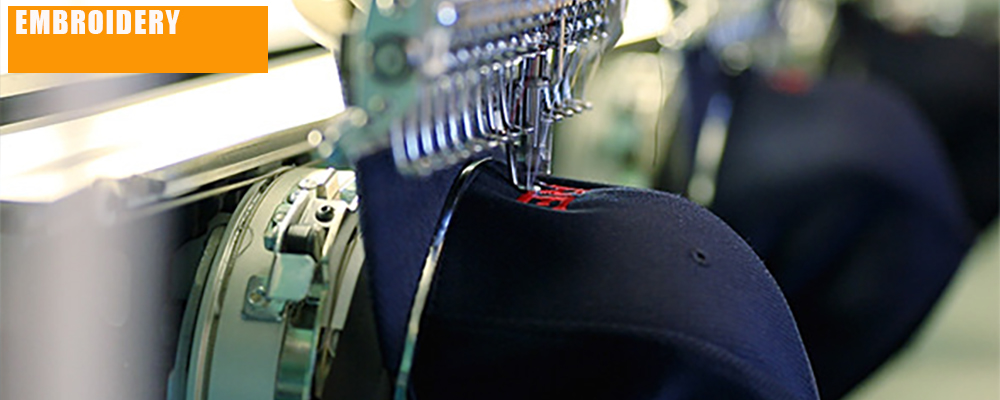
EMBROIDERY
By far the most popular branding style. To turn your logo in to the embroidery format we must first digitise your logo. This means that we need to replace the colours and lines of your logo with threads. From here the appropriate thread colours are chosen and we do a sample. Once approved, your file is uploaded in to our massive industrial machines, the garments are "hooped" to stay in the correct position and after programming, the machine will start to embroider your logo on to the garment(s).
When to Use Embroidery as a Decoration Method
Embroidered logos typically look best on polos, jackets, woven shirts, caps, and bags, but this is a truly versatile style of decoration. We've embroidered just about every style of apparel & accessory on our site!
Embroidery is Ideal for…
- Polo Shirts
- Hats, Beanies & Visors
- Jackets & Outerwear
- Sweatshirts & Layering
- Backpacks & Bags
- Embroidered Towels & Blankets
- Much more
Benefits of Embroidery as a Decoration Method
- There is an added texture to the design.
- The product does not need to be laid flat like in printing, making embroidery suitable for hats and bags.
- The intricate design evokes a high perceived value and sense of professionalism.
- More durable and resistant to damage from washing than most decoration methods.
Drawbacks of Embroidery as a Decoration Method
- The number of colors used in the design is limited to the EMBROIDERY THREADS and prices typically increase with additional colors.
- Embroidery is only a suitable decoration method for fabric.
- Embroidery machines can struggle with small lettering or fine details in the design.
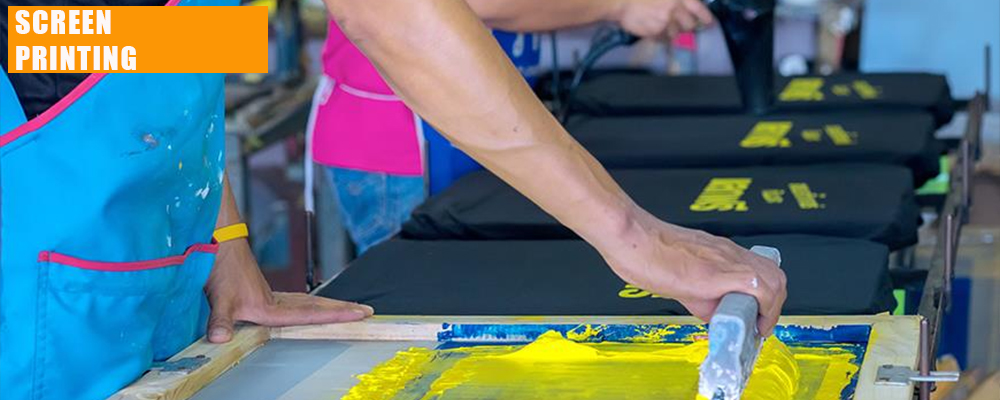
Screen Printing
An easy way to think about this is as a photographic stencil process. A stencil is created and then is used to apply layers of ink directly onto a product. The result is the screen's image transferred to the print surface. The versatility of this decoration method allows it to be used on a wide variety of items.
When to Use Screen Printing as a Decoration Method
Screen printing, also known as silk screen printing, is the most cost-effective method for large quantity print runs (around 50+ items) and works especially well with items like t-shirts and tanks. A complex design with many different colors requires different stencils for each color, so this decoration method is best for logos with 4 colors or less.
Screen Printing is Ideal for…
- T-Shirts
- Activewear & Sports Apparel
- Screen Printed Sweatshirts & Hoodies
- Promotional Pens & Custom Printed Notebooks
- Custom Drinkware
- Screen Printed Electronics
- Custom Golf Balls
- Much more
Benefits of Screen Printing as a Decoration Method
- Most cost effective decoration method for larger custom apparel orders.
- Just about any design and ink color can be applied to any product through screen printing.
- Ink is applied thicker than digital printing, making your design more vibrant and easier to see on darker fabrics or surfaces.
Drawbacks of Screen Printing as a Decoration Method
- The necessity to create screens means screen printing is not ideal for smaller order sizes or individually personalized items.
- Prices typically increase on orders with a high number of colors.
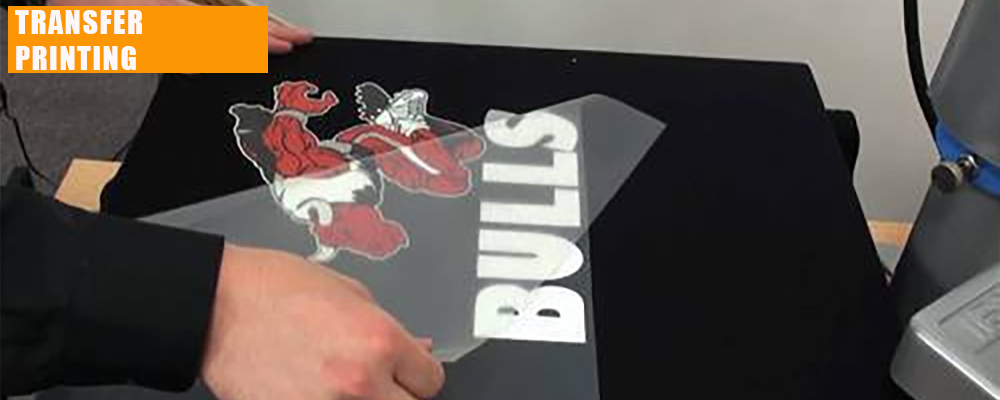
Heat Transfer Printing
If you have ever used an iron to press a decal onto a shirt then you know the basis of heat transfer, but our method is exceptionally more advanced. The digital heat seal decoration method utilizes regulated heat and pressure to thermally bond graphics onto a material’s surface.
When to Use Heat Transfer as a Decoration Method
Heat transfer, also known as digital transfer, is a great decoration choice if you are looking for affordable design options with unlimited colors. With decoration methods like embroidery and screen printing, you are using physical resources - thread and ink - to create a logo. This cost can be avoided with heat transfer, making it the most ideal decoration option for smaller orders.
Heat Transfer is Ideal for…
- T-Shirts
- Activewear & Sports Apparel
- Sweatshirts & Hoodies
- Backpacks & Bags
- Teamwear
- Team Uniforms & Jerseys
Benefits of Heat Transfer as a Decoration Method
- Minimal setup costs and equipment make heat transfers ideal for smaller order sizes.
- Affordable individually personalized decoration, such as sports uniforms.
- Allows for finer details and smaller text than embroidery.
- Heat transfer is available in many different finishes and styles.
- Environmentally friendly.
Drawbacks of Heat Transfer as a Decoration Method
- Logos and designs larger than 15 inches tend to be more expensive than other design methods.
- An image does not last as long as some other decoration methods and the printed area is not very breathable.
- Unable to use an iron on the printed area of the garment.
- When logos are too large the texture of the design can be thrown off.
- Should not be done on certain synthetic materials that can’t be exposed to the high heat from the iron.
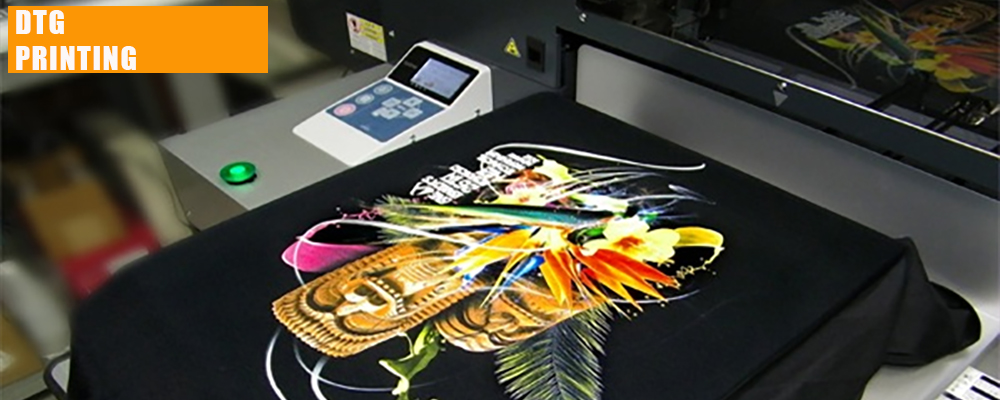
DTG Printing
You can think about digital printing, or direct to garment printing, as a similar process to printing a document from your computer. An image is created with no restraints to the number of colors or type of artwork used, and the image is printed or affixed directly onto the material. With embroidery & screen printing, you are dealing with physical resources (thread & ink) to create a logo; with digital printing, full color, high definition logos can be done economically, even in small quantities.
When to Use Digital Printing as a Decoration Method
Commonly used as a substitute for screen printing on smaller orders, digital printing also works well with logos that require a high amount of detail or are very graphics heavy. This is also a commonly used option for logos that contain a gradient, as the print can closely match the digital version seen on a computer screen. Check out our breakdown of the differences between screen printing and digital printing here.
Digital Printing is Ideal for…
- Notebooks
- Water Bottles & Drinkware
- Electronics
- Promotional Products
- T-Shirts
- Activewear & Sports Apparel
- Printed Sweatshirts & Hoodies
Benefits of Digital Printing as a Decoration Method
- Easier set up than screen printing – no screen creation or color separation required.
- Ability to print more precise details in a broader range of colors.
- Great for smaller order sizes.
Drawbacks of Digital Printing as a Decoration Method
- Digital Printing is typically more expensive than screen printing for large orders.
- Certain Direct to Garment Machines can only print on 100% cotton fabric.
- Digital Printing is slower than screen printing for large orders.
- DTG Machines can struggle with printing multi-color designs on dark fabrics.
3D Embroidery
3D puff embroidery is done by placing a foam pad, or “puff”, onto your products and then having your embroidery machine sew an outline of your logo or design. Once this is complete you simply remove the excess puff around the outside of the embroidered outline and you’ve got a 3D design. You can read our complete step by step guide to custom 3D puff embroidery here!
When to Use 3D Embroidery as a Decoration Method
3D embroidery is used almost exclusively on custom hats and caps to give your logo or design depth and height. Outside of headwear, 3D embroidery is used on other heavy-fabric items like sweatshirts, hoodies, and workwear.
3D Embroidery is Ideal for…
- Custom Hats
- Sweatshirts & Hoodies
- Workwear
Benefits of 3D Embroidery at a Decoration Method
- Extremely durable – the design should outlast the garment itself.
- The logo is more noticeable because of the 3D design.
- More stylish and sophisticated look.
Drawbacks of 3D Embroidery as a Decoration Method
- Not ideal for intricate designs because of the thickness necessary to achieve the 3D appearance.
- More expensive than traditional embroidery because of the extra thread used.
- Not suitable for lighter weight fabrics.

Vinyl Transfer
This transfer process uses heat to activate and attach a vinyl sticker to a fabric. Vinyl is soft to the touch with great stretch and is durable enough for sportswear. You can read our complete step by step guide to custom vinyl transfer here!
When to Use Vinyl Transfer as a Decoration Method
Vinyl transfer has especially great durability. Perfect for uniforms and jerseys, as they are worn frequently and go through a lot of wear and tear. This decoration option is extremely dependable wash after wash.
Vinyl Transfer is Ideal for…
- T-Shirts
- Activewear & Sports Apparel
- Sweatshirts & Hoodies
- Custom Backpacks & Bags
Benefits of Vinyl Transfer as a Decoration Method
- The image is long lasting and durable.
- Your company logo or custom design is easily applied to any fabric or material that can absorb color.
- Vinyl transfer is a very affordable decoration method.
Drawbacks of Vinyl Transfer as a Decoration Method
- Preparing the vinyl design can be time-consuming.
- It is possible to add multiple colors to your design, but it requires you to layer solid colors to get there and that just adds time to the process.
